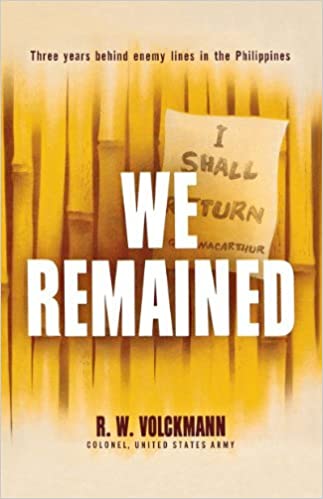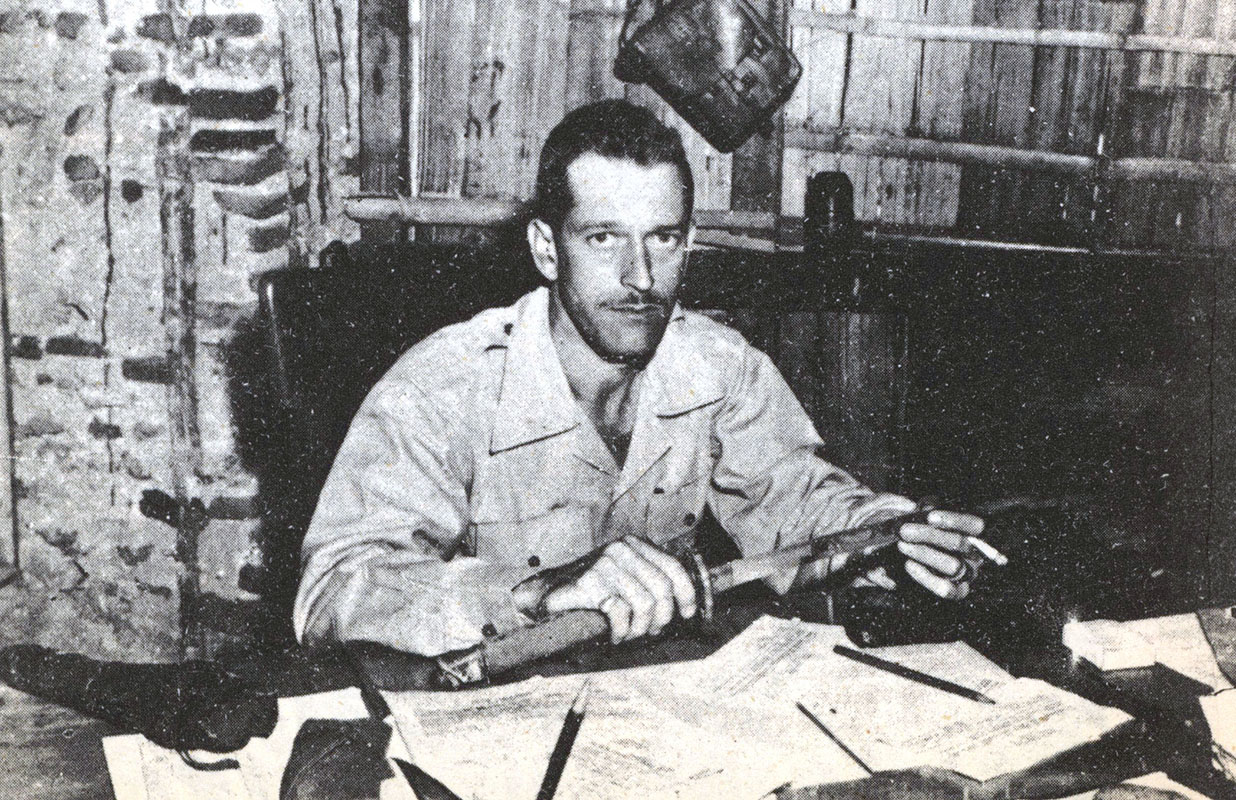 An area of interest of mine is the story of members of the U.S. military that escaped the Japanese in 1942 in the Philippines and became guerrillas. We Remained by Russell Volckmann is the fourth first person account I have read. I have also read two first hand accounts of being prisoners (including Gen. Wainwright’s book).
An area of interest of mine is the story of members of the U.S. military that escaped the Japanese in 1942 in the Philippines and became guerrillas. We Remained by Russell Volckmann is the fourth first person account I have read. I have also read two first hand accounts of being prisoners (including Gen. Wainwright’s book).
Russell Volckmann wrote this book in 1954. Volckmann graduated from West Point in 1934. In 1940, he was in the 2nd Infantry Division at Ft. Sam Houston commanded by Gen. Walter Kruger. He had put in for duty in the Philippine Islands upon graduation and finally got his dream posting.
He was a captain commanding an infantry company with the 31st Infantry. He was transferred to the Philippine Army in August 1941. Franklin Roosevelt had slapped an oil embargo and froze Japanese assets when Japan occupied the southern half of French Indochina in July 1941. All of a sudden, this neglected part of the American Empire slated for independence in 1946 became the focus of a frenzied military build-up. American officers were sent to train and advise the Philippine Army that had been called up for service. Volckmann found himself a regimental executive officer in the Philippine Army 11th Division, generally a position for Lt. Colonels.
The Japanese struck before the Philippine Army was trained and equipped. Volckmann describes the retreat from the beaches at Lingayen Gulf to the Bataan Peninsula. Volckmann witnessed what the Japanese did to prisoners when he found some of his men surprised by the Japanese bound and butchered. When the Filo-American lines collapsed in April 1942 from a Japanese offensive, the order was given for surrender. Volckmann and another officer decided to take their chances as guerrillas.
Volckmann and Capt. Donald Blackburn slipped through Japanese lines and walked to the northern mountainous portion of the island of Luzon. They had planned on linking up with other American officers who were organizing resistance behind enemy lines. There is a chapter devoted to the exploits of some of the early guerrillas. Some actions were pretty wild.
Those American officers including Col. Cushing surrendered after Gen. Wainwright gave the order for all forces to surrender in May 1942. Volckmann and Blackburn then set about creating an organization to train Filipinos for the eventual return of American forces.
The Japanese would occasionally make forays into the mountains forcing Volckmann and Blackburn to move around. For two years, there was little action as the guerrillas had little in the way of weaponry. Things changed when an American submarine brought a load of weapons as MacArthur returned to the Phillipines. Volckmann commanded 22,000 Philippine guerrillas who played the major part in clearing northern Luzon of the Japanese in 1945. Gen. Yamshita, the conqueror of Malaya and Singapore surrendered to Volckmann.
Max Hastings made the case in Retribution that MacArthur wasted resources clearing the Japanese from northern Luzon. He thinks MacArthur should have taken the airfields and Manila Bay and left the Japanese in the mountains. There is the military wisdom of leaving 60,000 of the enemy on your flank. Only two U.S. Infantry Army divisions were employed in conjunction with the Filipino guerrillas. The guerrillas freed up a lot of U.S. Army personnel.
Volckmann retired as a Brigadier General in the U.S. Army. He was the expert on guerrilla warfare and wrote Operations Against Guerrilla Forces and Organization and Conduct of Guerrilla Warfare in 1950. He has been called the Father of Special Forces. There is a fairly new book on Volckmann, American Guerrilla but I wanted to read his first hand account first.
This is a good book on guerrilla warfare including some of the nuts and bolts of organization. Next on the list in this subject is Edwin Ramsey’s Never Surrender.

This sounds very interesting. I am going to see if I can find a copy.
Was just looking at this book the other day. Your review makes for a solid recommendation. Adding it to the list!